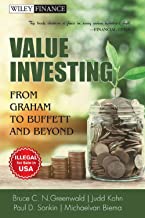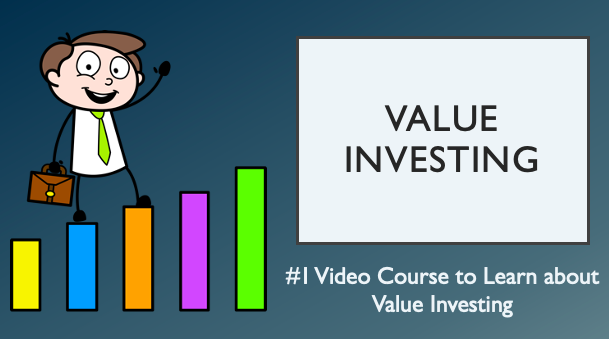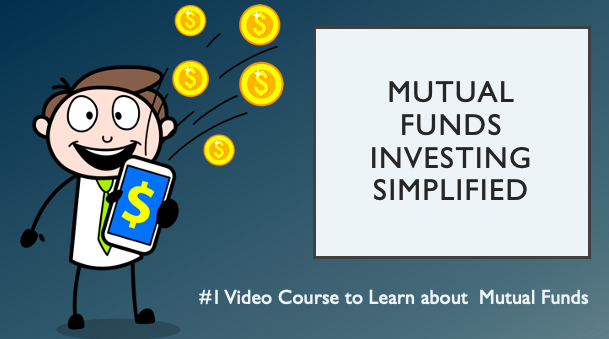Book Summary of Value Investing - From Graham to Buffet & Beyond
by Greenwald, Bruce C. N.

What is this book about?
"Value Investing: From Graham to Buffett and Beyond" is a comprehensive guide to the principles and practices of value investing. The book explores the evolution of value investing from its origins with Benjamin Graham and David Dodd, through its refinement by Warren Buffett, and further developments by modern investors. It provides a detailed analysis of how to determine the intrinsic value of a company by examining its assets, earnings power, and potential for profitable growth. The book emphasizes the importance of purchasing securities at a price significantly below their intrinsic value, a concept known as the "margin of safety."
Who should read the book?
This book is ideal for both novice and seasoned investors who are interested in the principles of value investing. It is also suitable for finance students, professional money managers, and anyone responsible for managing investments who wishes to deepen their understanding of this time-tested investment strategy. The book assumes some familiarity with financial concepts but is accessible to anyone willing to engage with its thorough analysis.
10 Big Ideas from the Book
- Intrinsic Value: The true worth of a financial security, determined by careful analysis of its underlying assets and earnings potential.
- Margin of Safety: Buying securities at prices significantly below their intrinsic value to minimize risk.
- Mr. Market: A metaphor for the market's emotional and irrational behavior, which creates opportunities for disciplined investors.
- Asset Valuation: Emphasizing the current value of a company's tangible assets as a foundation for investment decisions.
- Earnings Power: Assessing a company's ability to generate stable and predictable earnings over time.
- Growth Skepticism: Being cautious about paying for expected future growth, especially when it is not backed by a strong competitive advantage.
- Franchise Value: The value of a company's competitive advantage that allows it to sustain higher-than-average profitability.
- Behavioral Finance: Understanding that investor psychology often leads to irrational market behavior, which value investors can exploit.
- Portfolio Construction: Building a diversified portfolio with a focus on minimizing risk through careful selection of undervalued securities.
- Long-term Perspective: Patience and discipline are crucial, as value investing often requires waiting for the market to recognize the true value of an investment.
"Value Investing: From Graham to Buffett and Beyond" is a comprehensive guide that traces the evolution of value investing from its origins with Benjamin Graham and David Dodd to its modern applications by investors like Warren Buffett. The book is structured into three parts, each focusing on different aspects of value investing, providing both theoretical foundations and practical insights.
Part I: An Introduction to Value Investing
Part I lays the groundwork for understanding value investing by introducing its fundamental principles. The key concepts include:
-
Market Price Volatility: The market often misprices securities due to emotional and irrational behavior, creating opportunities for value investors. This is metaphorically represented by "Mr. Market."
-
Intrinsic Value: The true economic value of a security, which can be determined through diligent analysis. The goal of value investing is to purchase securities at prices significantly below their intrinsic value.
-
Margin of Safety: A critical concept introduced by Benjamin Graham, it involves buying securities at a price that provides a substantial cushion (ideally at least 33% below intrinsic value) to protect against errors in analysis or unforeseen market events.
-
Key Ratios to Remember:
- Price-to-Book Ratio (P/B): Used to assess whether a stock is trading below its book value, with lower ratios indicating potential undervaluation.
- Price-to-Earnings Ratio (P/E): Compares a company’s market price to its earnings, with lower ratios suggesting the stock may be undervalued.
Part II: Three Sources of Value
Part II delves into the methods for determining a company's intrinsic value by focusing on three primary sources:
-
Asset Value: The current value of a company's tangible and intangible assets, often based on reproduction costs. This provides a baseline for assessing a company's value.
-
Earnings Power Value (EPV): Reflects the sustainable earnings a company can generate from its current operations and assets without assuming future growth. It is calculated by normalizing the company’s earnings over a business cycle and applying a discount rate.
-
Growth Value: The additional value that a company can generate through growth, which should only be factored in if the company has a durable competitive advantage or "franchise." This element requires careful evaluation since most growth is not necessarily profitable.
-
Key Ratios to Remember:
- Net Asset Value (NAV): The adjusted value of a company’s assets minus liabilities, often recalculated using reproduction costs.
- Return on Invested Capital (ROIC): Measures how well a company is using its capital to generate profits, with higher ROIC indicating a strong franchise.
- Operating Margin: Reflects the profitability of a company’s core business operations, with higher margins indicating greater efficiency and profitability.
Part III: Value Investing in Practice - Profiles of Eight Value Investors
Part III profiles eight prominent value investors, showcasing how they apply the principles of value investing in their unique ways. These profiles highlight real-world applications of the concepts discussed in the previous parts, demonstrating that while the core principles of value investing remain consistent, there are many ways to successfully apply them.
-
Warren Buffett: Focuses on investing in high-quality businesses with durable competitive advantages and strong management. Buffett emphasizes the importance of ROE and intrinsic value estimation.
-
Mario Gabelli: Specializes in identifying companies trading at a significant discount to their Private Market Value (PMV), seeking out catalysts that will unlock this value.
-
Glenn Greenberg: Advocates for a concentrated portfolio of high-conviction stocks, emphasizing long-term focus and deep research.
-
Robert H. Heilbrunn: Focuses on distressed companies with strong management and turnaround potential, often using the P/E ratio to identify undervalued opportunities.
-
Seth Klarman: Known for investing in distressed securities and maintaining a significant margin of safety, often using DCF analysis to ensure investments are undervalued.
-
Michael Price: A disciplined investor who often takes an activist role to unlock shareholder value, using metrics like EV/EBITDA and Free Cash Flow Yield.
-
Walter and Edwin Schloss: Exemplars of deep value investing, focusing on simplicity and buying stocks that are trading well below their intrinsic value, often using the P/B ratio.
-
Paul D. Sonkin: Specializes in micro-cap stocks, focusing on companies that are small, neglected, and sometimes in distress, using in-depth research and ratios like P/E and EV/Revenue.
-
Key Ratios to Remember:
- Return on Equity (ROE): A focus for Buffett, indicating how efficiently a company uses shareholders' equity to generate profits.
- Enterprise Value-to-EBITDA (EV/EBITDA): Used by Michael Price for assessing a company’s valuation relative to earnings.
- Free Cash Flow Yield: Important for understanding a company’s ability to generate cash for dividends, buybacks, or reinvestment.
Key Takeaways from the Book:
- Value Investing Philosophy: The essence of value investing lies in purchasing securities at prices significantly below their intrinsic value, with a strong emphasis on risk management and capital preservation.
- Importance of Margin of Safety: A critical buffer against errors in valuation or unforeseen market downturns, ideally aiming for at least 33% below intrinsic value.
- Diverse Application: While the core principles are consistent, successful value investors apply them in various ways, from focusing on distressed assets to concentrating on high-conviction ideas or engaging in activist investing.
Conclusion:
"Value Investing: From Graham to Buffett and Beyond" provides a thorough exploration of value investing, combining theoretical foundations with practical insights from some of the most successful investors in the field. By understanding and applying the principles of intrinsic value, margin of safety, and careful analysis of assets, earnings, and growth, investors can achieve superior returns while minimizing risk. The book emphasizes that while value investing requires discipline, patience, and deep research, it remains a timeless and effective approach to investing in the stock market.
Which other books are used as reference?
The book references several key works in the field of investing and finance, most notably:
- "Security Analysis" by Benjamin Graham and David Dodd: The foundational text for value investing, establishing the principles that the book builds upon.
- "The Intelligent Investor" by Benjamin Graham: Another seminal work by Graham that popularizes value investing for a broader audience.
- "Common Stocks and Uncommon Profits" by Philip Fisher: Discusses investment strategies that complement value investing, particularly in identifying growth opportunities.
- "The Essays of Warren Buffett": A collection of Buffett's writings that provide insight into his investment philosophy and the application of value investing principles.
Browse Summaries of Top Investing books!
You may also like the below Video Courses



